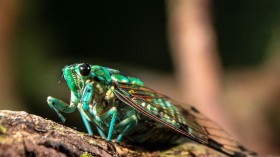Hybridization of wild and domestic cats is pushing the Scottish wildcat population on the verge of extinction because the genes that define wild and domestic cats are being "swamped" by those from hybrid and domestic cats.
Interbreeding of Cats
After 2,000 years of keeping each other at arm's length, wildcats and their domestic counterparts began to interbreed about 60 years ago.
While this may have served to protect their progeny from diseases carried by domestic cats, it is currently compromising the existence of wildcats as a unique species.
Domestic cats are said to be descended from Near Eastern wildcats that roamed the Fertile Crescent of the Middle East during the time when early human farmers began storing grain. They arrived in Britain some 2,200 years ago, where European wildcats already lived.
"Wildcats and domestic cats have only hybridized very recently. It is clear that hybridization is a result of modern threats common to many of our native species. Habitat loss and persecution have pushed wildcats to the brink of extinction in Britain," said Jo Howard-McCombe of the University of Bristol and the Royal Zoological Society of Scotland (RZSS).
Howard-McCombe and her colleagues examined genetic sequences from wild and domestic cats, including 48 present felines and 258 ancient samples discovered from 85 archeological sites over the previous 8,500 years, to determine when this interbreeding began.
According to the findings, which were published in Current Biology, these species generally avoided sexual contact with one another until the late 1950s, when rates of interbreeding between wild and domestic cats in Scotland increased dramatically, presumably due to diminishing wildcat numbers.
Interbreeding between wild and domestic cats increased rapidly, possibly due to diminishing wildcat populations and a lack of opportunities to mate with other wildcats.
Read Also: National Park Service Track its 99th Mountain Lion For an Underway Santa Monica Mountains Study
Extinction Of European Wildcats
Experts believe that if a wildcat population is being entirely eradicated, those that remain will want to mate with anything, and if the only thing there is domestic cats, that's probably what they'll choose.
In the short term, this may have helped their offspring: domestic cats carry diseases that can also affect wildcats, and many of the hybrid cats' genes pertain to immune system function.
"They may have helped to prevent the acquisition of those diseases, or at least make diseases not so bad," Larson said.
However, the longer-term impact could be the extinction of European wildcats in Scotland and other locations. The descendants of a captive breeding effort launched by RZSS in the 1960s may be the closest thing to a pure breed today.
In the first part of a mission to save the species, nineteen of these wildcats were recently released into a pine forest in the Scottish Highlands.
Captive-bred cats should be spared the enticing temptation of the domestic cat if they have a large enough region of wilderness to establish themselves and breed in.
To improve their chances, Howard-McCombe recommends adjacent cat owners get their cats fixed.
Related Article: New Brazilian Wild Cat Species Revealed by Genetic Testing
© 2024 NatureWorldNews.com All rights reserved. Do not reproduce without permission.






